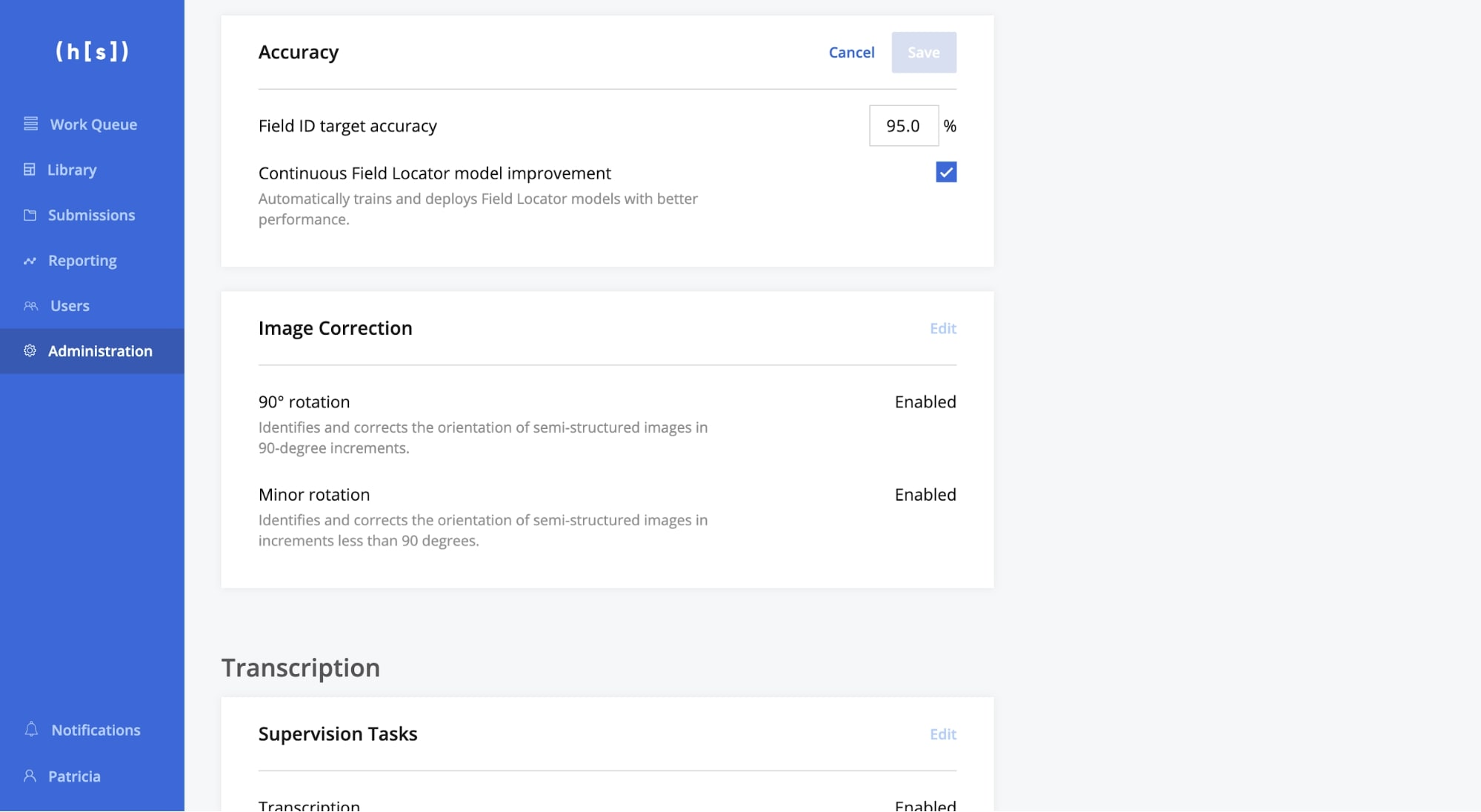How UI Drives Customer Adoption for Document Processing Software
We work everyday to ensure our customers are getting the most value of our technology and love hearing from satisfied users. We’re proud to introduce our latest blog series, #ThingsCustomersSay, featuring real customer soundbites. Check out the first installment below!
We want our people in the Hyperscience UI – and they want to use it. It’s slick.
CTO, Financial Services Company
One aspect that can make or break document processing software adoption is its ease of use. Without a simple user interface, software users are unlikely to adopt the software, or, if they do, will do so unwillingly, which negatively impacts the goals the company set out to achieve. Not only do legacy systems lack visual appeal, but they are also difficult to navigate. At Hyperscience, enterprise-grade and easy-to-use aren’t mutually exclusive. Our solution may be technically complex, leveraging the latest in AI and Machine Learning, but to our users it must feel remarkably simple and intuitive. One of our guiding product principles is to distill complexity and cater to non-technical teams and business stakeholders.
For example, our intuitive left-side navigation [pictured below] allows users to quickly jump from completing lightweight manual exception-handling tasks to analyzing our built-in reporting dashboards.

All change comes with pushback, especially when it requires breaking old habits and creating new ones.
Pre-Hyperscience, we had been using the same tool for 10-15 years. It isn’t easy to switch technologies without people chucking fits – so happy to say we haven’t spoken to a single team member who doesn’t love using Hyperscience.
Business Process Outsourcing [BPO] Organization
Prioritizing intuitive, low-code solutions that even the least technical users can utilize eases the challenges of change management.
Supporting Change Management with Seamless Design
Companies turning to automated document processing solutions want to reduce manual burden and make time-consuming, repetitive tasks more efficient. Most of the organizations we work with have been doing things in the same way for decades, so the process of moving beyond existing workflows and reimaging how they approach processes can be challenging.
The reality of automation is that humans will be part of the solution for the foreseeable future, and employees will have to interact with the selected platform. A seamless user experience is the difference between a tedious human-in-the-loop process or a more enjoyable one:
The Hyperscience Platform has a great usability to it! This is not as bad as I expected this task to be, so I am pleasantly surprised.
COO, Digital Insurance Provider
What’s more, when actual users (e.g. data entry clerks) are satisfied with a platform there is a better chance for adoption and long-term success.
Ease of use extends beyond visuals, design and robust user/admin settings to how simple it is for everyday users to complete a task. Some factors that impact the usability – and scalability – of a document processing solution include:
- The amount of time and clicks it takes to complete routine tasks like setting up a layout or extracting one document field
- The accuracy of the data extracted vs. how many errors require manual review and intervention
- How satisfying or frustrating the platform is to use
- Whether non-technical employees can efficiently navigate the software and perform tasks
If you need to have developers on staff to set up the coding and scripting required for configuration, or to get new use cases or lines of business up and running, your return on investment will be limited. This is a pain point we regularly hear from customers before they switch to Hyperscience. As one Canadian Life Insurance customer put it: “Hyperscience’s Email Input Connector, for example, is much more robust and easier to use than legacy equivalents, which require significant coding/scripting and do not have as many configuration options.”
The Hyperscience Approach to User Experience [UX]
Just completely in awe with the dashboards and reporting. This is going to be really awesome for us!
Canadian Payroll Provider
At Hyperscience, the end user comes first. The Hyperscience Platform not only delivers on the promise of automation, but does so in a thoughtful, scalable, user-centric way. One recent feature developed with the end user in mind is single-click mode for setting up layouts. Before this feature, users would have to find the invoice number, as an example, and draw the box around it. Now, users simply need to click on the number and the solution automatically draws the box for them, saving both time and mouse clicks. We constantly incorporate user feedback into our product roadmap and feature development process.
Another benefit of prioritizing simplicity and an instinctive user interface is that it helps clients become self-sufficient.
The reason that we believe Hyperscience is above the rest is the User Interface is very simple. I can see that I can do it all myself and not have to go back to you for everything.
RPA team lead, Financial Services Company
Many companies choose Hyperscience after working with overly complex, legacy vendors that can take “upwards of 3 months to get a new form up and running because we have to outsource everything.” One Fortune 500 insurance company using Hyperscience told us that with their legacy system, they had to call vendor support and open a ticket anytime a layout needed to be changed – an impractical process when you consider the diverse variety of documents. With Hyperscience, in contrast, they can set up a layout from one blank template and train a single model to handle all variations of common document types with just 400 sample documents.

